The following essay derives from artist Francisco Letelier’s Paso del Condor Project, which examines the legacy of Operation Condor through text and art installations. Ironically, the project was partially funded by Michael Vernon Townley, the arch villain in this story—lawyers for the Soria lawsuit, mentioned below, have channeled some of the restitution payments Townley makes towards Letelier’s work. “I have been collecting information about Chile and the murders for over four decades now,” Letelier notes. “It is difficult to reach back that far.” —Ed.
Francisco Letelier
On September 21, 1976, I am pulled out of my home room at Walt Whitman High School in Bethesda, Maryland, just outside of Washington DC. Our aunt Cecilia is waiting to drive my brother and me to George Washington Hospital. “There has been an accident” is all she will say. On the way we navigate snarled traffic, I hear the sound of sirens and emergency vehicles. We pass Sheridan Circle and the Chilean Embassy (Ambassador’s Residence), where firemen are hosing off the asphalt. At the hospital we learn that a car bomb has ended the life of my father, Orlando Letelier, and the life of Ronni Karpen Moffitt, a 23-year-old colleague.
The day after the murders, we are all in shock, barely able to talk, weighed down by a crushing darkness. The FBI wants to question us and one by one we are escorted over to the house next door. Our neighbor on a quiet cul de sac happens to be an FBI agent, and the interrogations are held in his living room.
I was sleeping in my bedroom with an open window, when yards away, Michael Townley, who will soon become famous as an assassin, crawls under the light blue Malibu sedan parked in our driveway and secures the bomb.
The agent and his co-conspirators hide in plain sight, sitting in a car on the street casing our home, noting the comings and goings of family members. I borrow the car when I can wrestle it away from my parents and drive it with the C2 explosive attached to its undercarriage in the days before it is detonated.
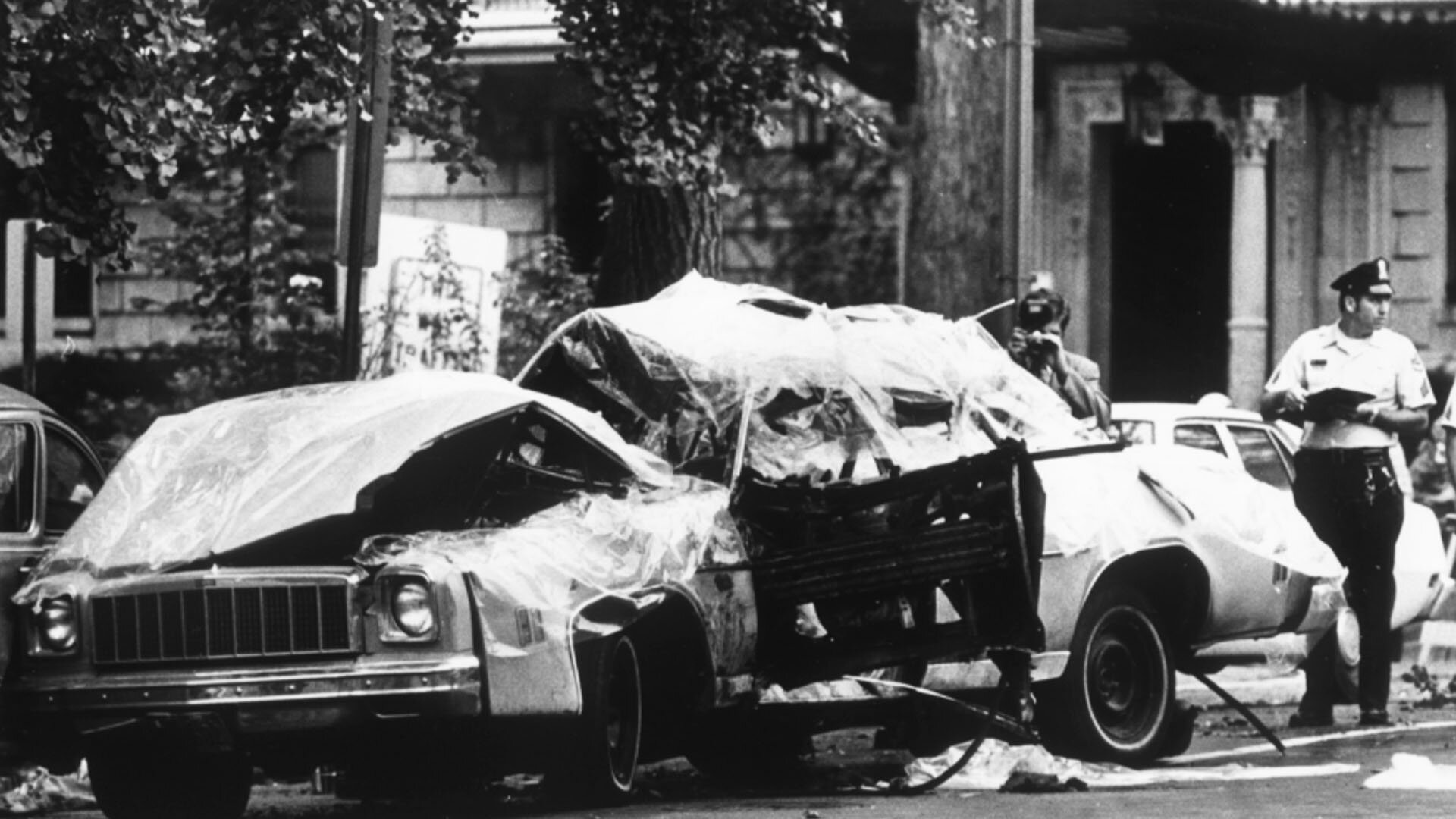
The bomb severs my father’s legs. As he bleeds to death, Ronni makes it out of the car to the sidewalk, but soon drowns in her own blood from a piece of shrapnel in her throat. They set up the questioning in my neighbor’s living room. I can hear the metallic swish of the basketball hoop set at the end of the cul de sac. When I’m called over, the men know a lot about my father, his travels and friendships.
Several years later the US government hands over the file they have kept on my father since he traveled to an economic summit in Havana with Salvador Allende. Opened in 1960, the file is thick with information about him and the rest of the family, including the names of my childhood friends, the places I would walk our dog, my first girlfriend, our games and pastimes.
In 1960, Vice President Richard Nixon took charge of Operation 40, the code name for a counter-intelligence unit comprised of Cuban exiles. Members of this operation will later conspire in the murder of my father.
In the FBI file there are also details about our life at the Chilean Embassy in Washington DC. My father was Ambassador of Chile to the US from 1970 to 1973 during the government of Salvador Allende. He was called back to Santiago to serve as Minister of Foreign Relations and then Minister of Defense just months before the September 11, 1973 coup that put General Augusto Pinochet in power and resulted in the death of President Allende and thousands of others.
The Embassy is a short distance from the Watergate apartments. Declassified documents show that the same gang of men who twice break into Chilean embassy offices on two occasions are the “plumbers”—the same agents who break into Democratic Party Offices at Watergate. They work for Richard Nixon.
Later, the world learns that Henry Kissinger, Richard Nixon and Richard Helms, the head of the CIA, have regular talks about ways they can subvert the goals of the Chilean government. Declassified documents and “telecons” (telephone conversations) document how the coup was planned. A memo dated October 15, 1970, works out the details, “We will not let Chile go down the drain,” Kissinger declares. “I am with you,” responds Helms. Nixon orders the CIA to “make the economy scream.”
We have long known that the Chilean secret police/intelligence service was behind this brutal act, perhaps the only clear case of state-supported terrorism that has occurred in Washington DC. — George Schultz
Michael Vernon Townley, son of a Ford executive, grew up in Santiago. Now working for the Chilean secret police as a hit man, he conspires with exiled Cubans, men trained through Operation 40, to carry out the murders in DC. Guillermo Novo Sampol, along with his brother, Ignacio Novo Sampol, and Alvin Ross Diaz, are recruited by Townley. All three belong to the militant anti-Castro group known as the Cuban Nationalist Movement.
In 1978, the Chilean regime, confronted with evidence by the FBI and US Justice Department, gives him up, but Townley becomes a witness for the US Department of Justice, and enters the FBI witness protection program after serving only 62 months in jail. Townley is an international assassin, sent to silence Pinochet’s opponents in Chile, Rome, Buenos Aires, and other places. His mission is part of Operation Condor, a coalition of military regimes supported by the United States that cooperate in silencing their opponents across national boundaries throughout the globe. Even under FBI protection, Townley is implicated in other murders, and questioned concerning the murder of former Swedish Prime Minister Oscar Palme.
On Tuesday April 6th, 1971, during my father’s post as ambassador, my parents attend a state dinner at the White House.
It’s a fancy affair, an event for the Latin American ambassadors in Washington DC, as well as the ambassadors of Mexico and Canada. In 1902, President Theodore Roosevelt had expanded the State Dining Room and increased its capacity to 140 seated guests. On the evening of April 6th, the room sparkles, filled with foreign dignitaries and their spouses, mostly speaking Spanish. Menus are placed at each setting, embossed in gold with a Presidential seal and metallic trim, indicating the food and alcohol served as well as the date and location.
During his speech, President Nixon declares his long admiration for the countries of the South. He assures the dinner guests that although present-day circumstances draw the US to highlight its relationships with the Middle East, Asia and the Soviet Union, the US relationship with its American neighbors is different.
“What I am trying to say is that we have a special relationship, you are closest to us, very important to us, the relationship is personal over many years, personal going back over so many memories…”— Richard Nixon, April 6, 1971
Nixon is perhaps trying to keep track of his memories when two months previously he installs a recording system in the White House. The new system is approved by the president as a way of preserving a historical record of decisions and discussions. It is a closely held secret—only the Secret Service and three aides know about the microphones. Other men with whom the President makes plans do not know they are recorded and archived day after day. No one suspects that the system will play a large role in the unraveling of the Nixon presidency.
On the same afternoon of April 6, 1971, before the festivities of the evening, in recorded conversations with National Security Advisor Henry Kissinger, Nixon is impatient with the Vietnam peace talks being conducted in Paris:
Nixon: Well, things better start to happen or—you know, I’m—you probably don’t believe me, but I can perfectly turn, I’m capable, that is—even my own, even Haldeman wouldn’t know—I’m perfectly capable of turning right awful hard. I never have in my life. But if I found that there’s no other way—in other words, hell, if you think Cambodia had flower children fighting, we’ll bomb the goddamn North like it’s never been bombed…
Kissinger: Well, I will—
Nixon: We’ll start doing it, and we’ll bomb those bastards, and then let the American people—let this country go up in flames.
Many are those who underestimate how far Nixon and Kissinger will go, the forces they will marshal in order to thwart not only Salvador Allende, but to create a world according to their personal designs. Almost 50 years later we are still uncovering information about how utterly mistaken it was to believe that fair play could rule the day.
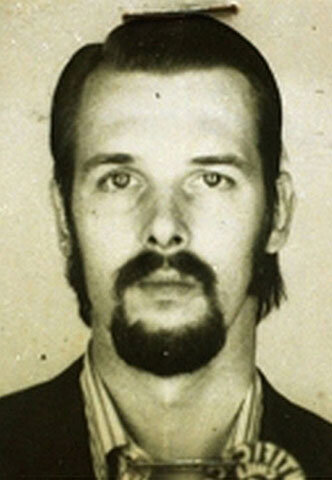
Declassified documents from 1970 reveal Richard Nixon, Henry Kissinger and the CIA plan to prevent Allende’s ratification as president. A team of covert operatives is inserted into Chile to push outgoing president Eduardo Frei to support a military coup that will prevent Allende from taking office. The National Security Council, Henry Kissinger, Richard Nixon and Richard Helms lay out policy toward Chile, deciding that other Latin American countries have to be prevented from following Chile “as a model.” Kissinger pushes for close relations with military leaders throughout Latin America in order to control opposition and coordinate pressure. At this time the United States trains the armed forces throughout Latin America and sells weapons to everyone. The military regimes that will be the death squads of the future in Central America, Colombia, Mexico and Chile aspire to receive special training at The School of the Americas in the Panama Canal Zone (Panama expelled The School of the Americas in 1984, whereupon the US Army moved it to Fort Benning in Columbus, Georgia).
As Allende takes power, they undermine his government through economic pressure and diplomatic isolation while the CIA carries out propaganda efforts to create a sense of panic in the country.
When Nixon resigns in disgrace, the public knows very little compared to what is known today. Nixon’s inner circle orchestrates a cover-up to hide their role in the 1972 scheme to install microphones in the offices of the Democratic National Committee at the Watergate Apartments and offices along the Potomac River. Using his human assets, anti-Castro counter insurgents trained through Operation 40, Nixon devises a scheme to assure his re-election and keep tabs on his opponents.
Ironically the best evidence of Nixon’s crimes comes from the clandestine audiotapes he himself keeps so assiduously.
In 1976, Michael Townley runs a chemical lab at his home in Santiago with the aid of biochemist Eugenio Berrios. On a night early in September 1976, a LAN aircraft bound for Washington DC takes off from Santiago, Chile in fair weather. Amongst the passengers is Townley, a tall man with blue eyes and dirty blonde hair. Carefully wrapped in his carry-on luggage is a bottle of Chanel No 5. Subject to turbulence, the contents could have caused the death of all passengers aboard, for the bottle contains not perfume, but a reformulation of sarin nerve agent that is to be sprayed on a pillow in order to eliminate my father. The nerve agent sarin was first developed in Nazi-era Germany as a pesticide; it evaporates almost instantly into a gas that seeps into the body through the skin and eyes and interferes with the body’s electrical signaling. Victims die because important muscles, including the lungs, become paralyzed. For unknown reasons, Townley decides that using sarin is not the way to go and continues to plan the murder with the Cubans, using a bomb later the same year. As for Eugenio Berrios, wanted by Chilean authorities for involvement in the Letelier case, he escaped to Uruguay in 1991 and was found beheaded in 1995 in Montevideo.
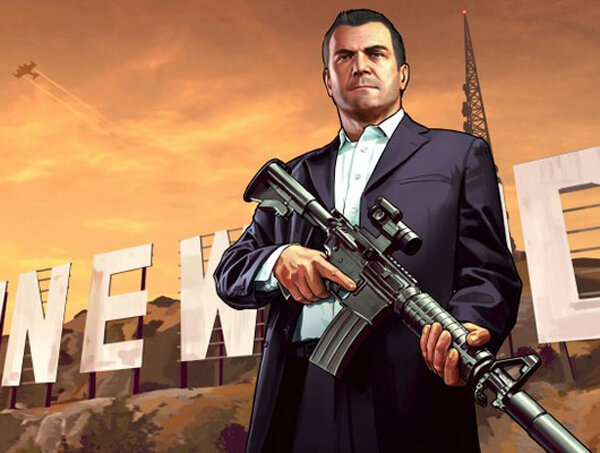
Grand Theft Auto is a video game I have never cared to play, but it is loved and hated by millions the world over. It is a violent and sexist world where a player can cross town at high speed with a beautiful woman at their side. One of the characters, Michael DeSanta, is a former bank robber who is now under the FIB (homologue) witness protection program. His real name is Michael Townley, and he stealth-fully plants a bomb in a cellular phone. The phone will blow up the founder of Life Invader, a social media network much like Facebook.
The FBI men who interrogate us after my father’s murder in 1976 suggest many things could have caused his death—lovers, jealousy, arms running, suicide, but each member of the family repeats with certainty, “Pinochet killed him.” “DINA killed him” (DINA, Chile’s Dirección de Inteligencia Nacional).
In the months before the murders in 1976, President Gerald Ford brings George H.W. Bush to Washington and appoints him Director of Central Intelligence (DCI). At that time the Agency is being investigated by the Church Committee regarding illegal and unauthorized activities by the CIA, these include their role in Chile.
Relying on Bush’s CIA, on Oct. 11, 1976, Newsweek reports that “the Chilean secret police were not involved” in the Letelier assassination. “The [Central Intelligence] agency reaches its decision because the bomb is ‘too crude to be the work of experts and because the murders, coming while Chile’s rulers are wooing U.S. support, can only damage the Santiago regime.'” The story also appears in the New York Times and other US news outlets.
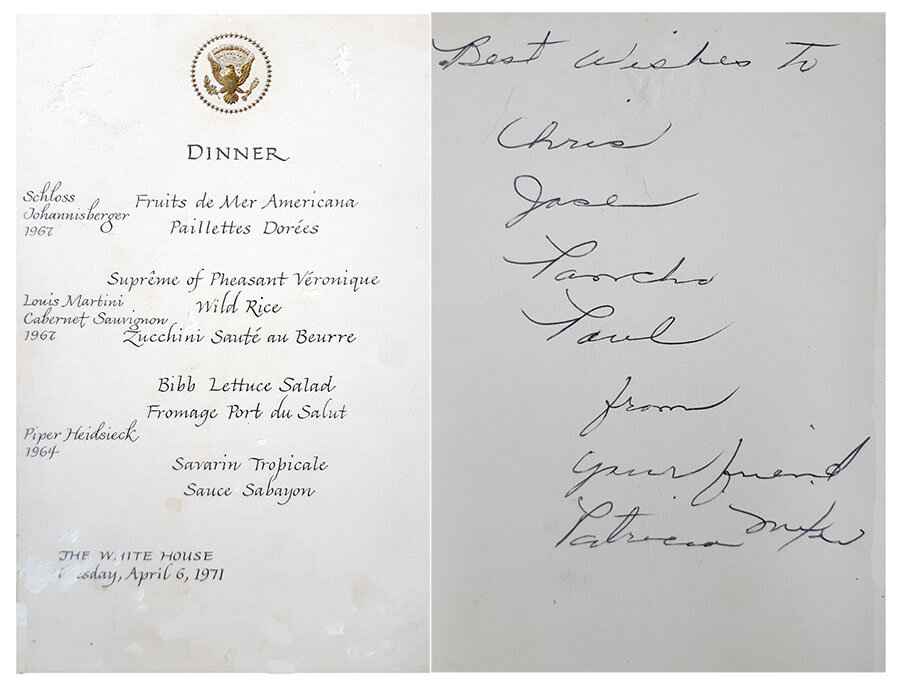
Almost a year after the 1973 coup in Chile, my father and other men who worked with Salvador Allende are transferred from Dawson Island and its concentration camp across the water from the southernmost city in the world at the time, Punta Arenas. We are allowed to visit them at the Ritoque Concentration Camp, a couple of hours away from Santiago. My father has changed dramatically; I don’t recognize him when I see him. He has lost 50 pounds, his fingers have been broken and he has skin cancer.
At the White House dinner in 1971, my mother, Isabel, sits with Patricia Nixon. At my mother’s request, Mrs. Nixon signs one of the exquisite menu cards created for the occasion, embossed in gold and executed in elegant calligraphy, dedicating it to me and my brothers.
Over the next couple of years, Pat’s husband will lay down the foundations for the violent overthrow of the government in Chile.
On the evening of the White House dinner, I wait for a bus to Sheridan Circle. I am accustomed to the wait at the bottom of a hill in a stretch of wood that connects to Rock Creek Park, swatting gnats and reading in the disappearing light. The bus races through the coming evening and jerks to a stop only long enough for me to hit the pavement near the spot, just right there, where my father will later be murdered.
In 1991, I receive a call from the TV show America’s Most Wanted. They want to do an episode about the last remaining fugitive in the murders, Virgilio Paz y Romero. The man who provided the explosives and parts for the remote control is recognized by a viewer and after 15 years on their most wanted list, federal agents nab him living as a landscaper in West Palm Beach.
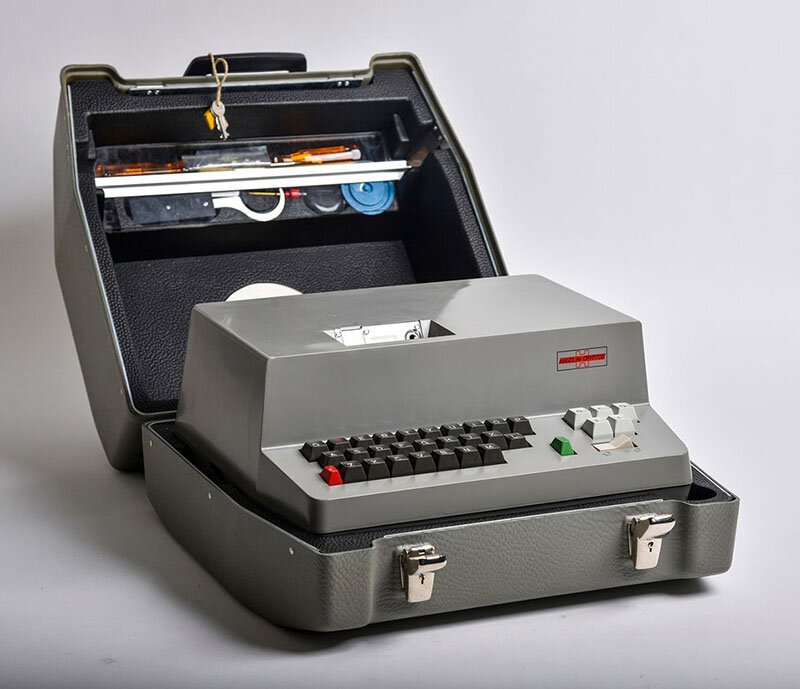
In 1992, Paraguayan human rights lawyer, Martin Almada, acting on a tip, discovers a mountain of papers in a small building behind an abandoned police station in Asuncion, Paraguay. The 700,000 documents known as the Archive of Terror, reveal that the founding members of Operation Condor are Argentina, Paraguay, Chile, Argentina and Uruguay, with Bolivia and Brazil joining later. The archive shows that with the help of the CIA, Colombia, Peru and Venezuela also cooperate, providing intelligence in order to murder 50,000, disappear 30,000 and imprison another 400,000. The operation has an encrypted communication system, routed through US military bases in the Panama Canal, which enables members to build up a database of suspects and respond quickly.
Much of the case against Chilean General Augusto Pinochet by Spanish Judge, Baltasar Garzón, is built upon these archives, as are other cases against human rights violators in other Condor Nations.
In 1995, I sit in the Supreme Court of Chile with my family when retired General Manuel Contreras (Pinochet’s head of Secret Police and right-hand man) and Brigadier General Pedro Espinoza are found guilty as intellectual authors of the murders.
In London in 1998, after a publicized arrest during a visit with his friend Margaret Thatcher, Pinochet is held under house arrest for a year and a half, but is released, and returned to Chile where a Supreme Court appointed by the former dictator, pronounces Pinochet too infirm to stand trial.
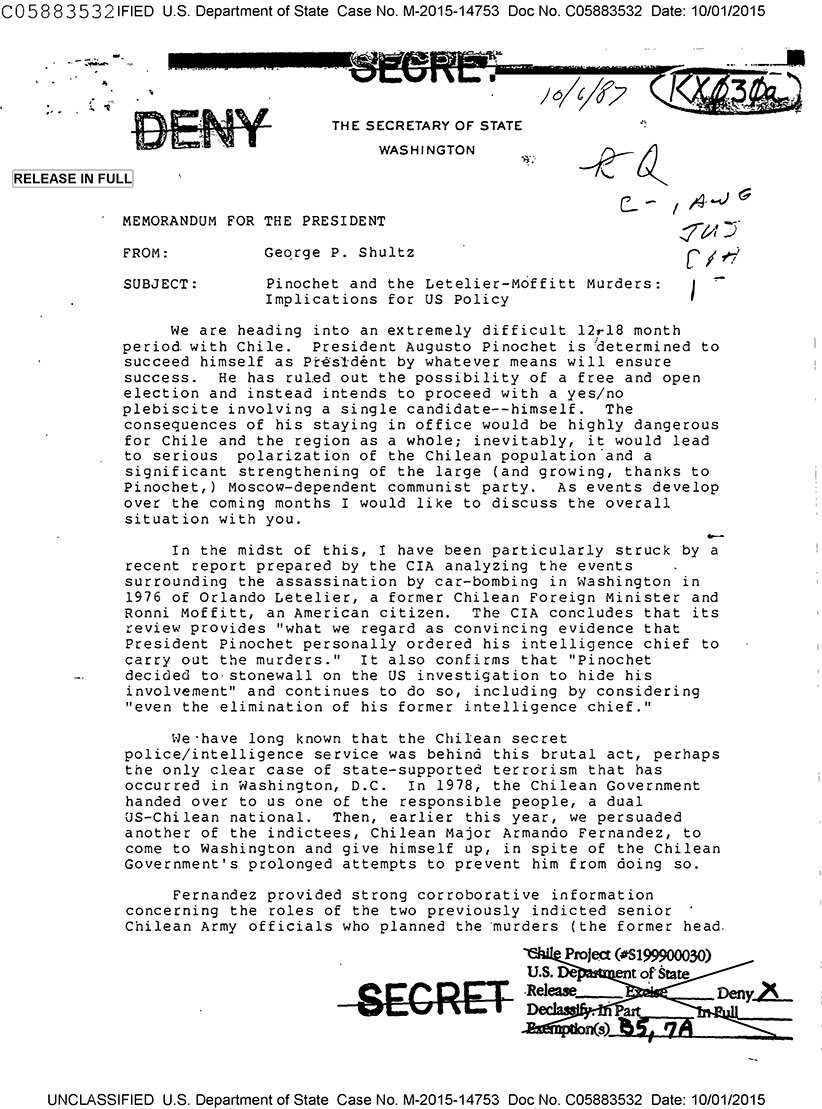
In February 2020, George Shultz, former Secretary of State under Ronald Reagan, dies. He is 100 years old. In a memo written by Shultz to President Reagan in 1987, he refers to a CIA report that shows “what we regard as convincing evidence that President Pinochet personally ordered his intelligence chief to carry out the murders.”
In 2015, the memo is declassified, showing that in 1998 during his London arrest the State Department knows that Pinochet ordered the murders. By the time Pinochet dies in 2006, five US Presidents have declined to reveal that as early as 1978, the US has evidence that Pinochet ordered the murders in DC.
In 2016, Chile’s Supreme Court asks the United States to extradite three former agents who worked for Augusto Pinochet’s 1973-90 military dictatorship, and are suspected of the murder of a United Nations diplomat 40 years earlier. The court asks that the US hand over Chilean Armando Fernández Larios, American Michael Townley and Cuban Virgilio Paz. All three co-conspirators in the murder of my father are wanted in Chile for the detention, torture, and killing of Spanish-Chilean citizen Carmelo Soria on July 14, 1976. Before the extradition request, Soria’s widow, Laura Gonzalez-Vera sues Townley for damages in a US court. Townley defaults on the suit and the district court enters a $7 million judgment against him. He is compelled to make $75-dollar weekly payments, under the legal possibility that his new name and whereabouts can be made available to plaintiffs if he does not comply.
The extradition request still stands.
For more than forty years, every year we gather at the circle to honor Orlando and Ronni and pledge our commitment to justice and human rights. The case helps topple Pinochet and steer the way for improved international justice, showing perhaps, that the arc of the moral universe might tend towards, at least, measures of justice. Sheridan Circle also become a symbol for other nations and communities.
After a May 16, 2017 state visit with President Trump, Turkish President, Recep Tayyip Erdoğan arrives at the Turkish Ambassador’s residence at Sheridan Circle across the street from the Chilean Embassy. He is met by Armenian and Kurdish protesters, the majority of whom are US citizens. They gather at the circle, 100 yards from the embassy, denouncing Erdoğan’s human rights record. Video recordings of the event show Turkish embassy personal and presidential bodyguards, evading Washington DC embassy police officers and brutally attacking the protesters.
It would be yet another attack by foreign agents on dissidents and US citizens on the streets of DC.
President Trump calls President Erdoğan to apologize for the actions of demonstrators. Although the House of Representatives passes a resolution calling for “perpetrators to be brought to justice,” only two men are arrested and charges dropped one year later, before meetings with Erdoğan and US Secretary of State Rex Tillerson. Victims of the attack file a civil suit seeking millions in damages, while the Turkish government claims to be protected by sovereign immunity. In February 2020, a federal court in DC denies a request by Turkey to dismiss the civil suit.
At a Unite the Right rally in Charlottesville, Virginia, a few months after the Turkish embassy beatdown, White nationalists, Klansmen and neo-Nazis gather to let the world know that Chile is not the only place with Nazis who dream of resurrection. Amidst the chaos of the growing pandemic and final months of the Trump presidency, White supremacist Proud Boys appear at gatherings wearing tee-shirts that say, “Pinochet Did Nothing Wrong.”
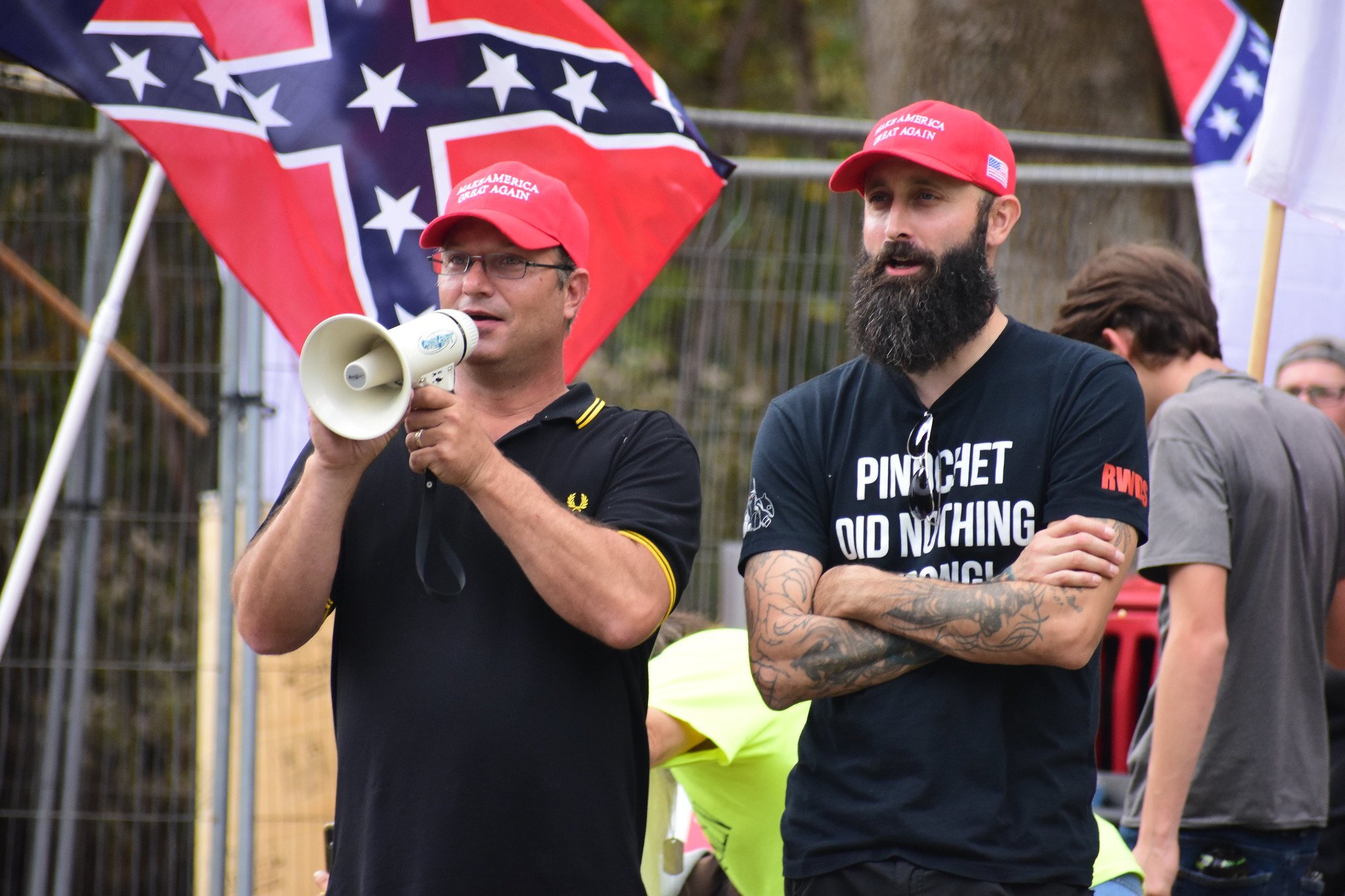
In March 2020, a revelation challenges even the trove of the Archives of Terror. Crypto AG, a Swiss manufacturer of encryption machines, sold them to more than 102 nations worldwide. It is revealed that the company is secretly owned by the CIA and the German intelligence agency, BND. Declassified records show that a back door built into the machines allows the US and others to monitor communications of all clients, whether allies or foes. Operation Condor nations use the encryption machines as they conduct internal and cross border terrorism. A memo from former Secretary of State Schultz is just the tip of a large and unwieldy iceberg that surpasses the cloak and dagger used for my father’s murder and points to the likelihood that the United States has eavesdropped on operations leading to deaths and imprisonment, torture and human rights violations, not only Chile, Latin America and the USA, but throughout the world.
“… the relationship is personal over many years, personal going back over so many memories, personal in the sense that when something happens, a tragedy in your house, it also happens in our house. You feel it in your hearts. We feel it in ours. When there is happiness in your house or in your country, we feel happiness in ours.”— Richard Nixon, April 6, 1971
How do we measure complicity? All the killers and conspirators involved in the murders are free today. The investigation into Ronni Karpen Moffitt’s murder remains open in Chile. The assassins are wanted for questioning in many other countries, but the US continues to protect its witnesses and allies. Townley is wanted by governments other than Chile, convicted in absentia for attempted murder in Italy and terrorist activity in Venezuela. Grand Theft Auto continues to enjoy huge sales — in the game version of Townley he is considered “a man of extreme cunning, thinking his motions and actions through carefully and precisely while being sure to keep his actual motivations a secret.”
But hey, it’s only a game, not real life.
During the last days of February 2021, in an unprecedented action, the Biden administration releases an intelligence report that states that Crown Prince Mohammed bin Salman approved the assassination of Washington Post contributor Jamal Khashoggi, killed inside a Saudi consulate in Istanbul on Oct. 2, 2018, while completing paperwork for his upcoming wedding. A Saudi hit team kills, then dismembers Mr. Khashoggi. His body has never been found.
Penalties are announced by the US, including a travel ban, and freezing of assets of the former Saudi intelligence chief as well as sanctions against the paramilitary unit that took part in the assassination. But the risk of damaging American interests is too great and officials say they really don’t want to “rupture” relationships with Saudi Arabia, instead want to “re-calibrate to be in more in line with our interests and values.”
Meanwhile, Hatice Cengiz, Khashoggi’s fiancée, seeks a more tangible route towards legal justice and accuses the Crown Prince of murder and dismemberment in a lawsuit filed in late 2020. The lawsuit is also going after other highly-placed Saudis. Evidence in civil law suits can be used in criminal investigations as well. Her actions are possible under the 1991 Torture Victim Protection Act.
Armando Fernández Larios assisted Michael Townley in my father’s assassination. He reached a plea agreement with US federal prosecutors and came to the United States in 1987 after pleading guilty.
After a five-month federal prison term, he moved to Miami, Florida where he remained outside the reach of Chilean courts. Named by Chilean Judge Juan Guzmán in his investigation of the Caravan of Death squad, Fernández Larios is also wanted in both Chile and Argentina for other murders.
On March 14, 2005, the Eleventh Circuit Court of Appeals upheld a verdict finding Fernández Larios liable for torture, crimes against humanity, and extrajudicial killing in the case of Winston Cabello in Copiapo, Chile in 1973. The suit was brought by the Cabello family through The Alien Tort Statute (ATS) and the Torture Victim Protection Act (TVPA), allowing for civil suits in U.S. courts to remedy a limited set of human rights violations. Fernández Larios’s appeal claimed the 10-year statute of limitations had passed, but judges took into account the fact that Winston Cabello was disappeared and that the family did not have direct evidence of his death until his remains were found in a mass grave in 1990.
The 2005 verdict was the first verdict handed down by a U.S. jury for crimes against humanity and the first time a U.S. court heard claims of atrocities committed by the Chilean military following the September 11, 1973 coup.
In the weeks before my father’s murder, Henry Kissinger approves a State Department diplomatic démarche aimed towards the heads of Condor states, Chile, Argentina and Uruguay, to express “our deep concern” over “plans for the assassination of subversives, politicians, and prominent figures both within the national borders of certain Southern Cone countries and abroad.”
Five days before the bomb is detonated, Kissinger orders the State Department to cancel the warning. Today, we know that US agencies at the time have wide access to Condor operations concerning the murders, including the Crypto AG encryption machines in use at the time.
My family and others will continue to push, both for a Chilean government with the resolve to pursue justice and a United States government brave and transparent enough to prosecute state terrorists.
We continue to seek the release of the remaining documents concerning the murder of my father and Ronni in order to clarify the complicity individuals and US agencies bear for the unfolding tragedies that have followed in the wake of its interventions in Latin America.
It is never too late to uncover truths that will make a difference.



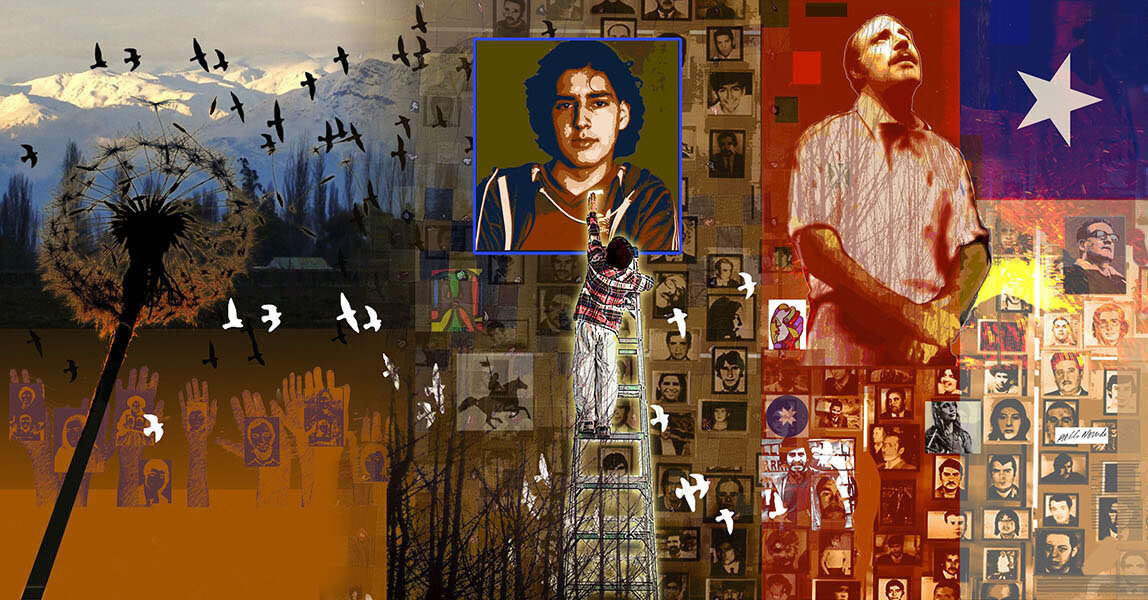
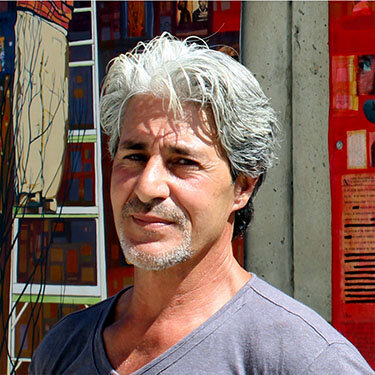


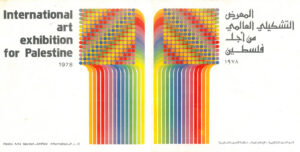
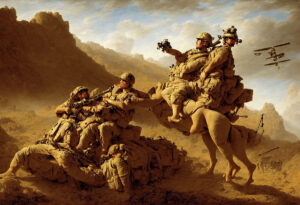
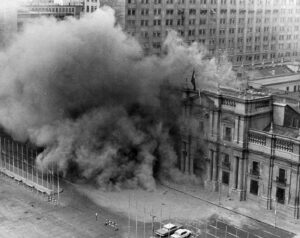



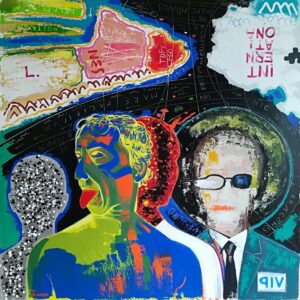
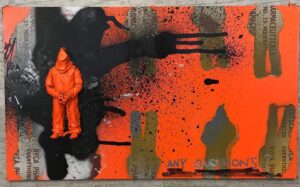
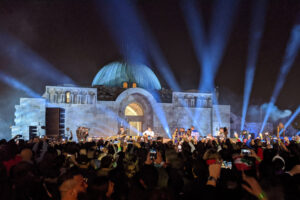

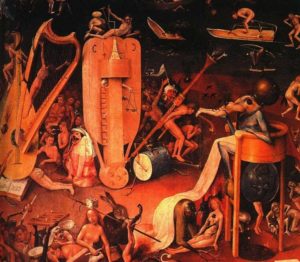

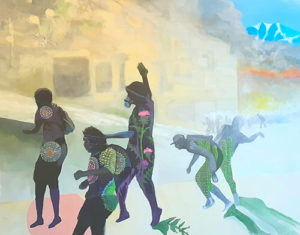
Dear Francisco. I am very sorry for your loss. It is heartbreaking. I urge you to reach out to Rep. Luna regarding current JFK hearings. Townley, who appears to be still alive under witness protection, should be interviewed regarding the JFK assassination. Michael Townley was apparently part of Chicago Junta, a killing group that was likely involved in the JFK assassination. Townley was very young back then. “Townley married Mariana Callejas. Although active in the Socialist Party of Chile, she was actually working as an informer for Chilean military intelligence. Soon afterwards Townley began working for the CIA. He became associated with a Cuban group called the Chicago Junta. This group included Frank Sturgis, Orlando Bosch, Antonio Veciana and Aldo Vera Serafin. According to Peter Dale Scott, this operational hit team was disbanded on 21st November, 1963, the day before John F. Kennedy was assassinated.” https://spartacus-educational.com/JFKtownleyM.htm.